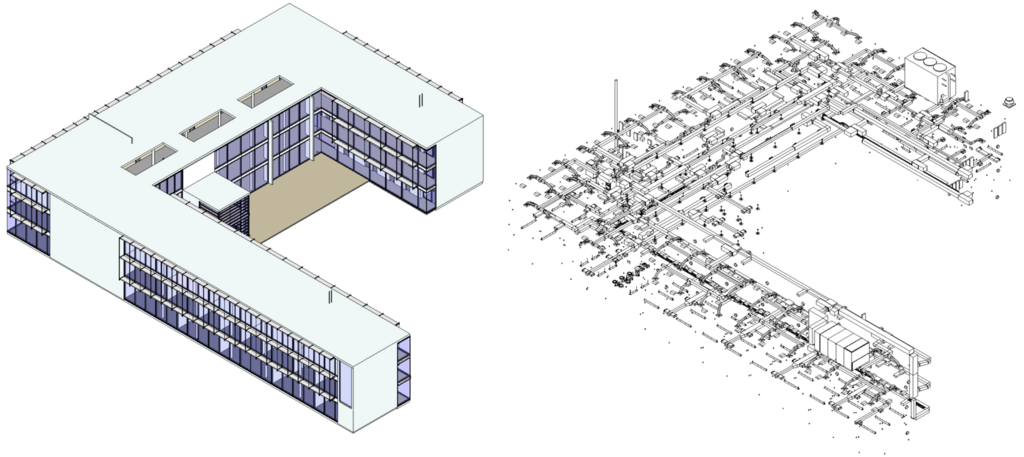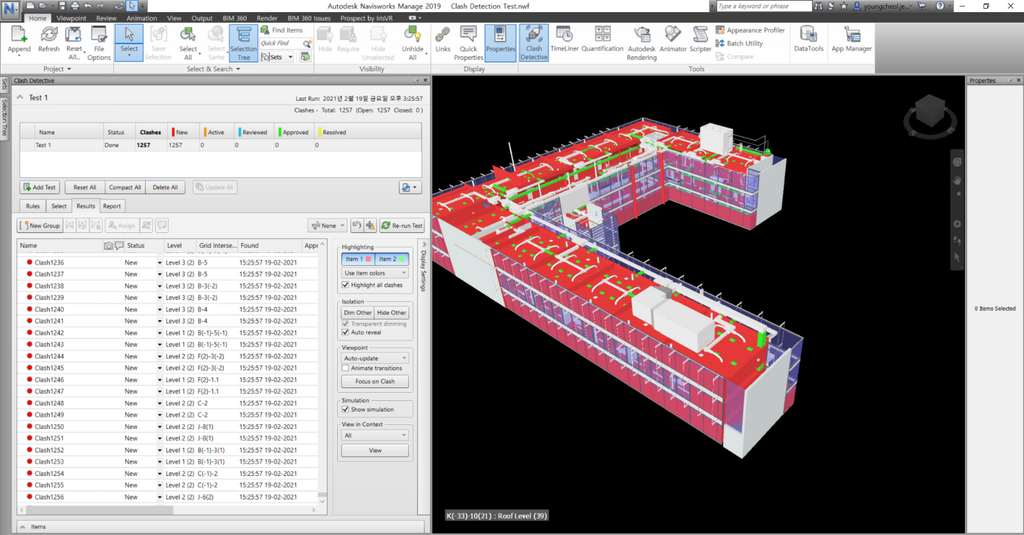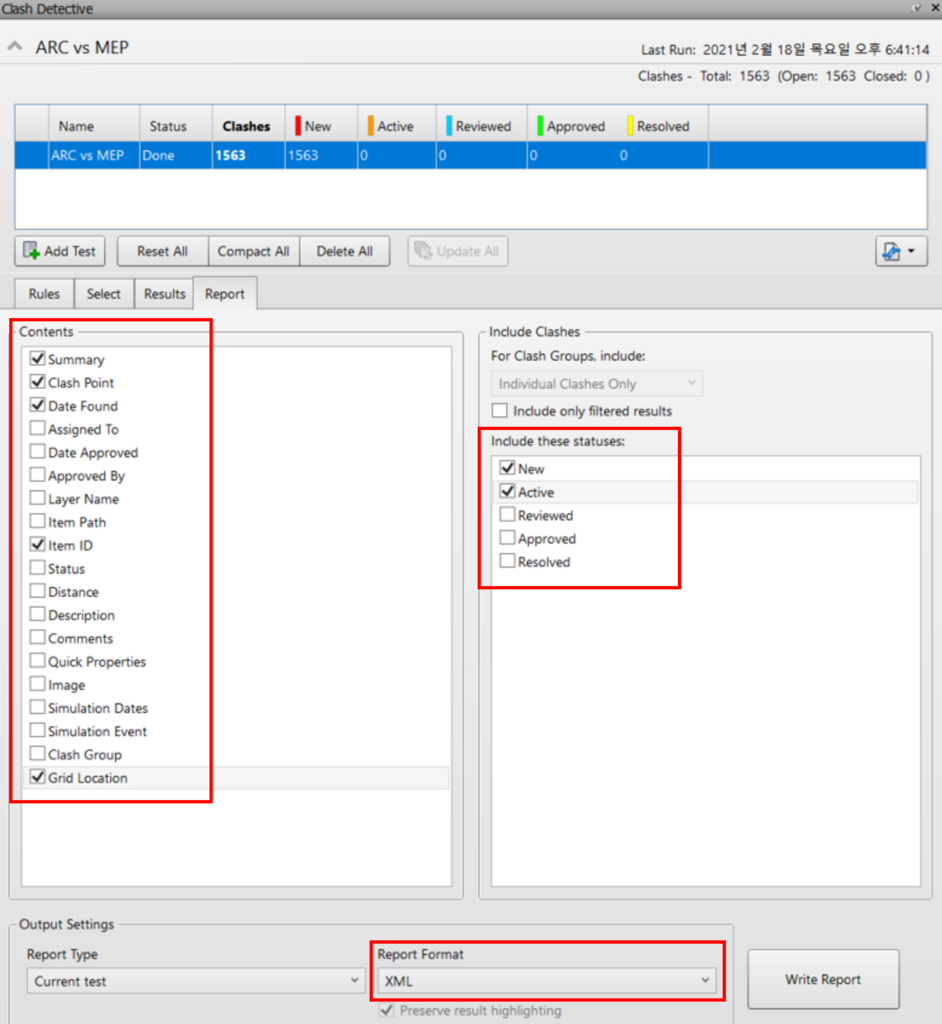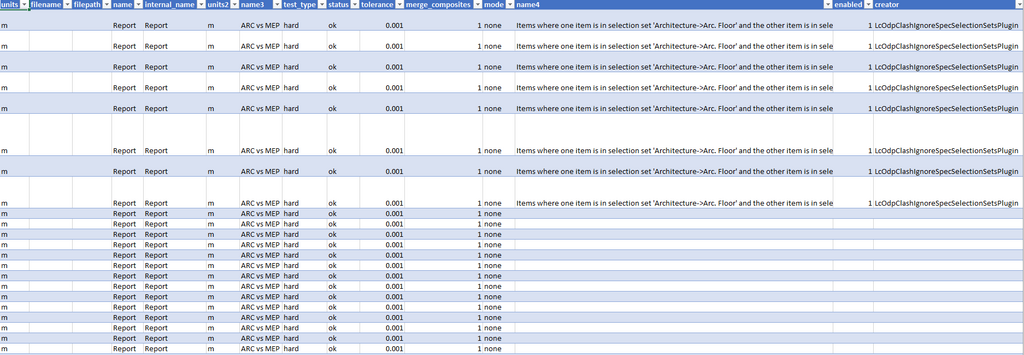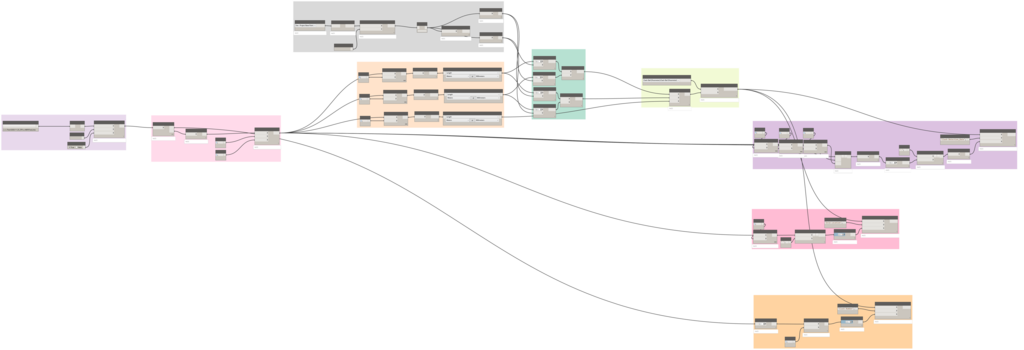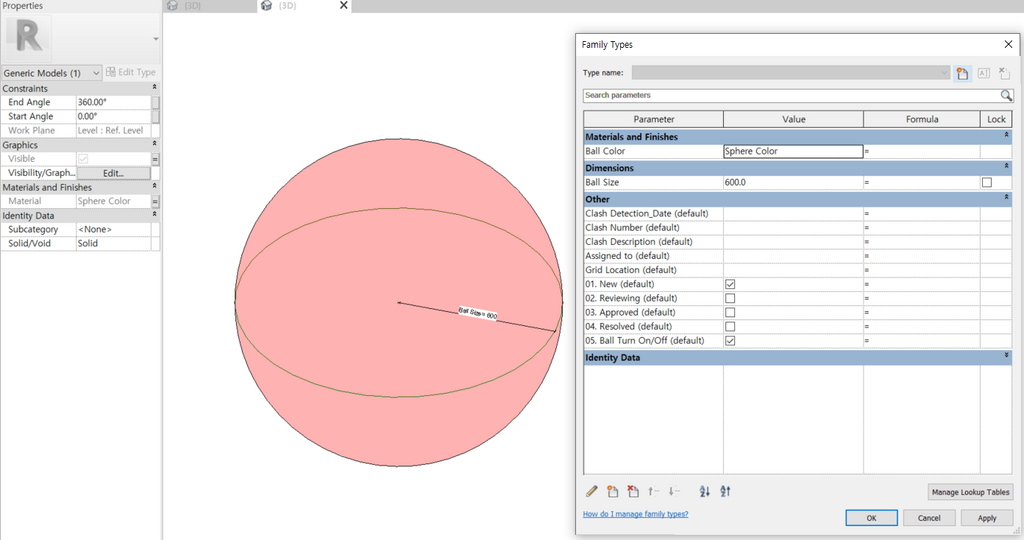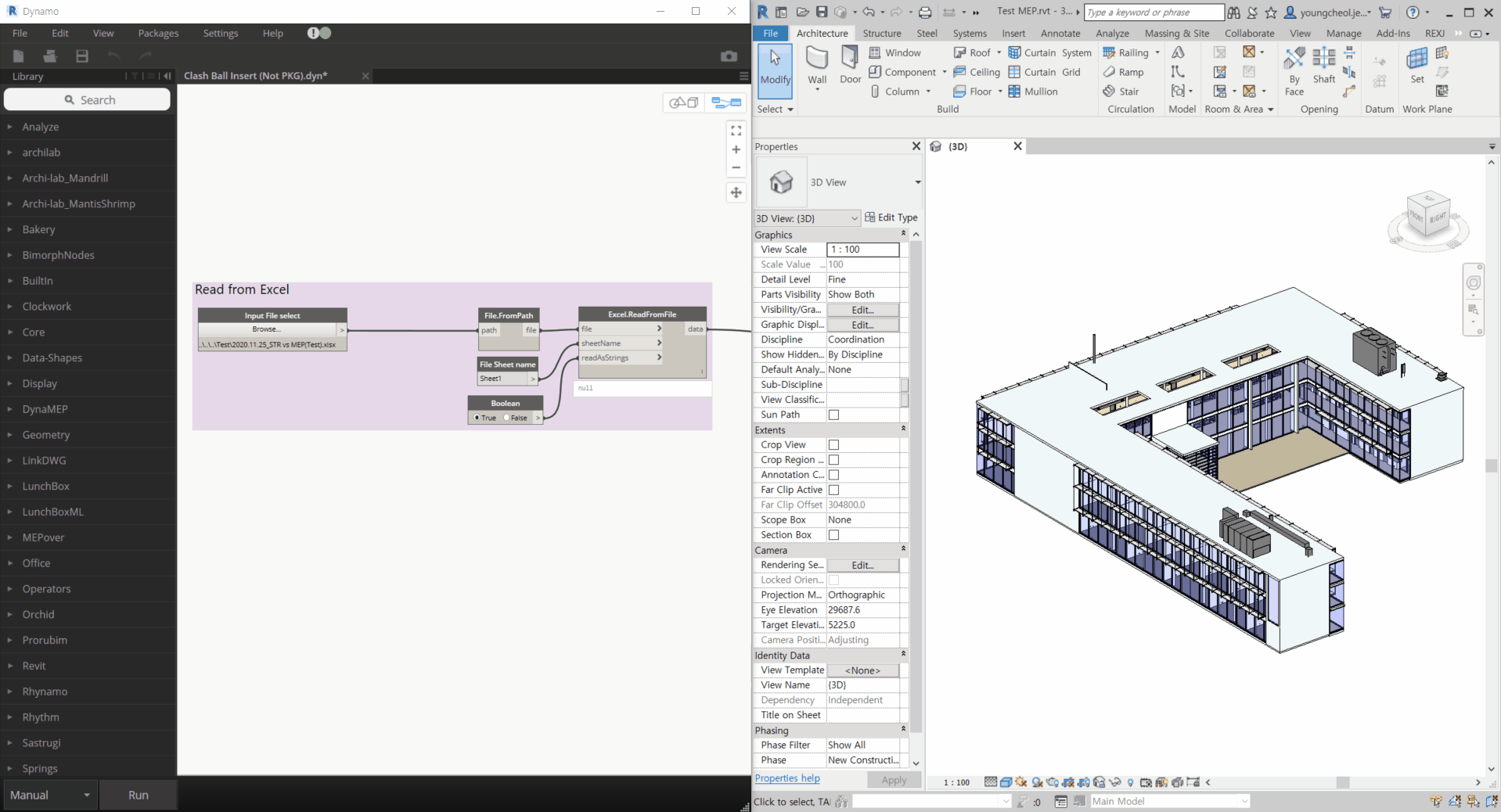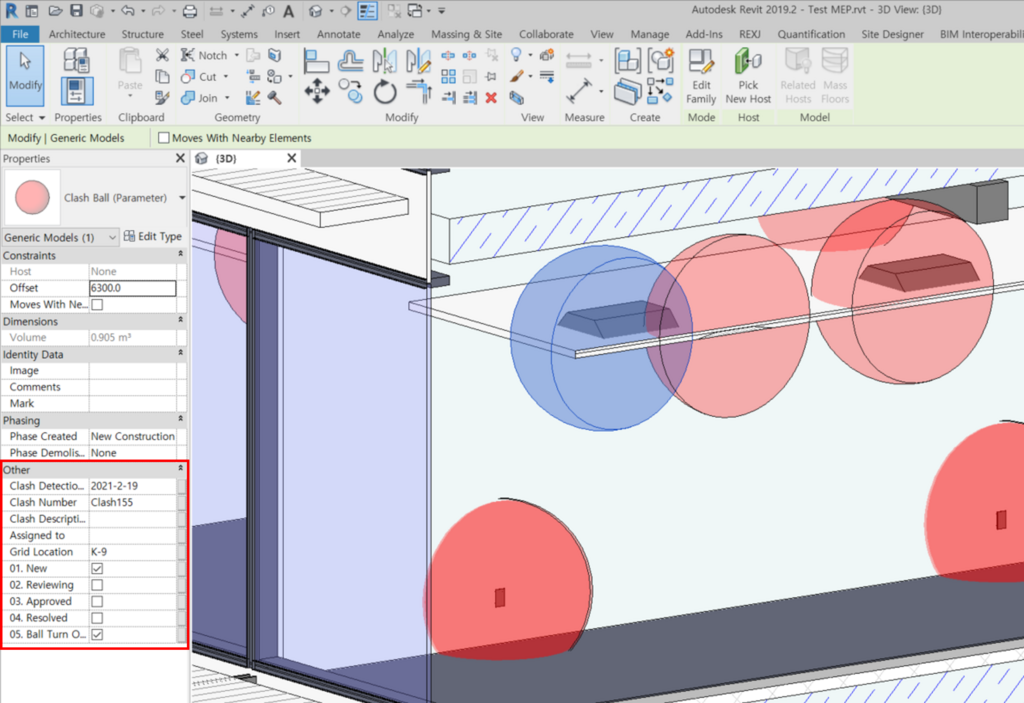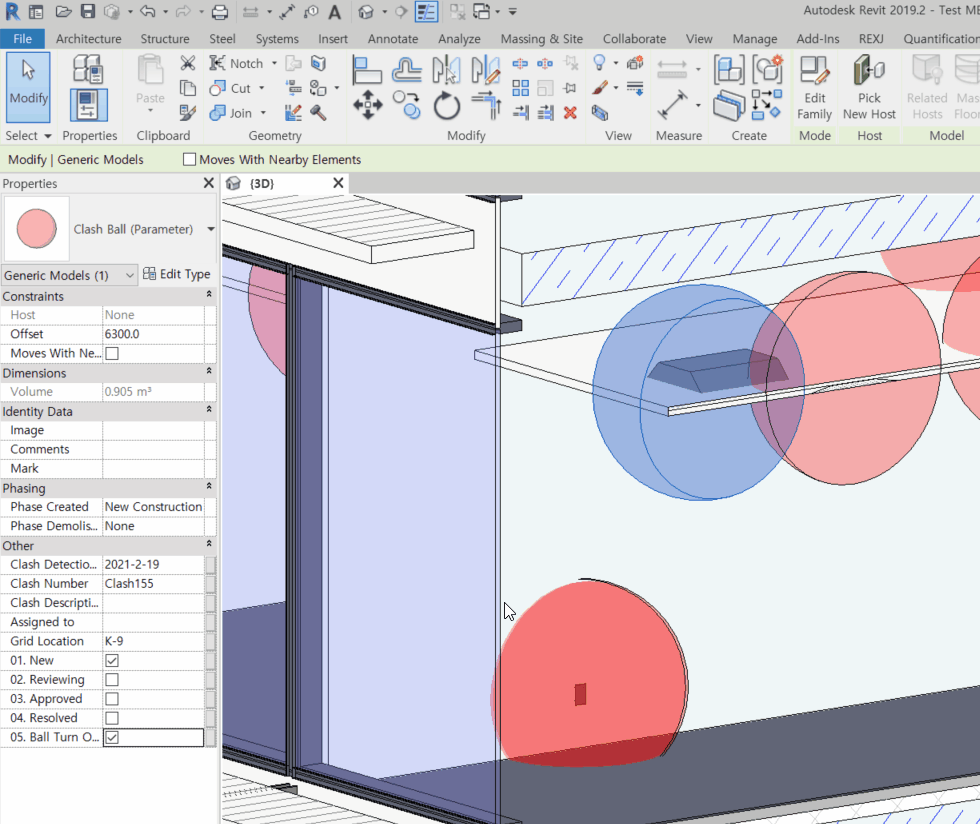Clash Ball – How to see Navisworks Clash results in Revit
What is the most popular BIM software in the BIM industry?
Of course there are many BIM software, but recently I have worked on BIM consulting based Autodesk ‘Revit’ and I want to share one of interesting things.
In a middle of BIM consulting work, there was a problem between Revit and Navisworks. The problem is Revit operators and managers can not handle Navisworks and when they tried to resolve clashes, it was difficult to find the right clash locations in Revit with only a clash report.
To solve above problem, I suggested ‘Clash Ball’ and they could see clashes in Revit directly. So I would like to show in this article, how to insert Navisworks Clash results into Revit using Dynamo. Not only see clashes in Revit, but also can manage its status using Parameters in Revit. It is advanced skill to utilize digital information (Data) in BIM environment.
Here is the software version I used in this aricle.
- Revit version 2019 (Sample models, see Figure 1, 2),
- Navisworks 2019,
- Dynamo 1.3.4,
- Excel (Office 365).
I will skip Revit modeling (Used sample project in Revit), File converting – Revit to Navisworks – and Clash detection Running.
Let’s move on the steps as follows.
- Export Navisworks clash detection data as XML file,
- Convert XML to Excel format,
- Set up Dynamo script,
- Insert Clash Ball into Revit model using Dynamo,
- Check Clash Ball in Revit.
Export Navisworks Clash Detection Data
As you can see below ‘Figure 3’, I found 1,256 clashes between Architecture sample model and MEP sample model.
Move on the Report tab and check and check out ‘Contents’ following ‘Figure 4’, also ‘Include these statuses’.
In this article, I will only use New & Active clashes (Depends on client requirement or situation, the other options will be set up). Click Write Report and Save XML file onto Desktop.
Convert Excel Data
Using the default converting excel file I prepared and try to convert XML file (Clash data) to Excel file.
In the excel file, right click on CellA:2 -> Move on XML -> Import -> Select the XML file exported from Navisworks.
After imported data, save as the Excel file on to Desktop.
*If just open the XML file, it appears to be unorganized status. (See figure 6)
Set-up Dynamo Script
Before I insert Clash Ball into the project, I made the Dynamo script.
Here is one of the groups of this script.
What do I need to do first to insert Clash ball on the right location in Revit model? As you guess well, I need to assign the Excel file which has data and need to assign which excel sheet I will load to and read in Dynamo.
Except for above ‘Read from Excel’, there are eight groups more.
For example,
- To extract XYZ coordinates of Clashes and re-arrange only XYZ coordinates data,
- To convert meter unit to millimeter unit,
- If there is a project north and true north, calculate the angle difference,
- To insert Clash ball,
- To insert other data into parameters on Clash ball.
Insert Clash Ball using Dynamo
Before insert Clash ball, its family needs to be loaded into Revit model.
Here is the Clash ball family, which is I set-up some parameters, it can be controlled ball’s diameter, material, color, visibility on/off and others. These parameters will be useful for a team using Revit worksharing.
If finish all settings, start to insert Clash ball in Revit model. I need to do file select and run only.
Check Clash Ball in Revit
Here is one of the clashes ‘Lighting Fixture vs Ceiling’. Normally when run clash detection in Navisworks, many users make rules to ignore sort of these clashes in Navisworks.
As you can see, Clash ball gives you easily find where clashes happen in Revit, also automatically Clash detection date, Clash number and Grid location have been input on parameters, it will be one of the good points to manage its status using parameters ‘New, Reviewing, Approved or Resolved’, descript a clash or assign a clash to BIM operator or manager for resolving the clash.
If any clash has been Resolved or Approved, I can use Ball Turn on/off. I hope someone who reads this article will get an idea to manage clashes in a Project.
This Clash Ball method is considered useful if it is used in a local server without BIM360 as a way to apply to clash detection in the usual way using Revit and Navisworks, or in a more elaborate clash detection.
Of course, using BIM360 could expect a similar effect when using web based ‘Model Coordination’ function in BIM360 – Clash detection and Issue function – and I am currently researching BIM360 updated.
For more information and if want to get this Clash ball family, Dynamo script, and other materials, please contact here.
